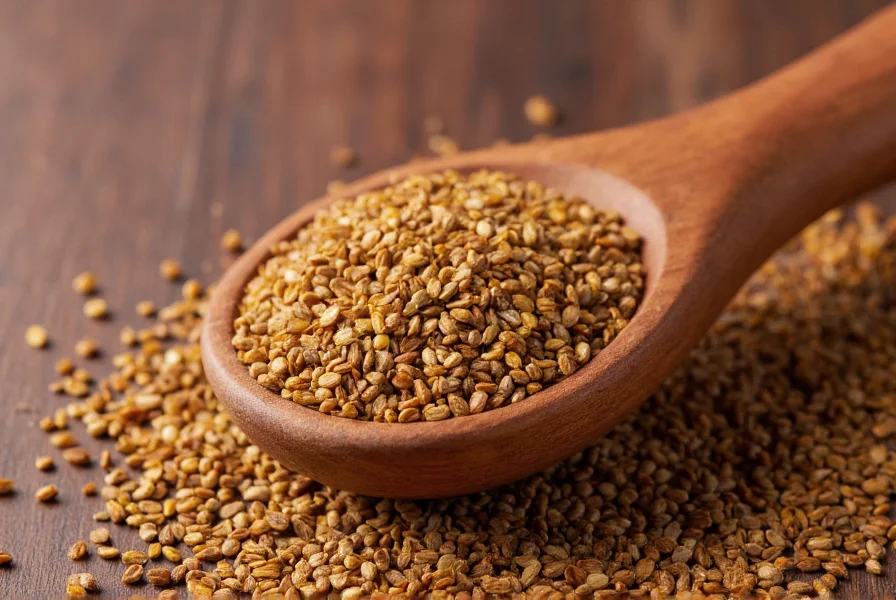Cumin stands as one of the world's most widely used spices, with a flavor profile that has shaped culinary traditions across continents for millennia. Understanding its distinctive taste characteristics helps home cooks and professional chefs alike harness its full potential in the kitchen. This comprehensive guide explores the nuanced flavor dimensions of cumin, its chemical composition, optimal usage techniques, and cultural significance in global cuisines.
The Sensory Profile of Cumin
Cumin's flavor profile reveals multiple dimensions when examined closely. The primary taste sensation is earthy and warm, reminiscent of dried soil after rain, with secondary notes that include:
- Nutty undertones - similar to roasted peanuts or sesame seeds
- Pronounced bitterness - particularly when used excessively
- Peppery heat - mild but noticeable on the palate
- Citrus hints - especially when freshly toasted
- Subtle smokiness - develops when dry-roasted
The aroma of cumin is equally distinctive, with volatile compounds that create an immediate sensory impact. When whole seeds are crushed or ground, they release cuminaldehyde—the primary compound responsible for cumin's characteristic scent. This aromatic quality makes cumin particularly effective in spice blends where fragrance plays a crucial role in the dining experience.
| Spice | Primary Flavor Notes | Intensity Level | Best Culinary Applications |
|---|---|---|---|
| Whole Cumin Seeds | Earthy, nutty, slightly citrus | Moderate | Tempering oils, rice dishes, breads |
| Ground Cumin | Warmer, more bitter, pronounced earthiness | High | Curries, stews, spice rubs, sauces |
| Toasted Cumin | Enhanced nuttiness, reduced bitterness, smoky notes | Very High | Dips, dressings, finishing spice |
The Science Behind Cumin's Distinctive Taste
Cumin's unique flavor chemistry explains why it behaves differently than other spices in cooking. The seed contains approximately 3-5% essential oil, with cuminaldehyde comprising 40-50% of this oil—the compound primarily responsible for cumin's characteristic aroma. Other significant components include:
- Terpenes - contribute earthy, woody notes
- Pyrazines - create nutty, roasted characteristics
- Thymol - adds subtle medicinal undertones
These compounds interact differently with heat and other ingredients. For instance, cumin's bitterness intensifies when exposed to prolonged high heat, while its nutty qualities emerge when toasted briefly in dry pans. Understanding these chemical reactions helps cooks maximize cumin's positive attributes while minimizing potential drawbacks.
Cultural Significance Across Global Cuisines
Cumin flavor has shaped culinary traditions worldwide, though its prominence varies significantly by region. In Indian cuisine, cumin serves as a foundational spice in tempering oils (tadka), where whole seeds crackle in hot oil to release flavor before other ingredients join the pan. Mexican cooking frequently features ground cumin in chili powders and adobo blends, while North African tagines often incorporate cumin alongside warming spices like cinnamon and coriander.
Interestingly, cumin's usage patterns reveal cultural preferences. Middle Eastern preparations typically use moderate amounts to complement other spices, whereas some Indian regional cuisines employ more generous quantities. This variation demonstrates how the same spice adapts to different culinary philosophies while maintaining its essential flavor identity.
Optimal Usage Techniques for Maximum Flavor
Mastering cumin flavor requires understanding proper handling techniques. The spice responds dramatically to different preparation methods:
- Dry toasting - Heating whole seeds in a dry skillet for 1-2 minutes intensifies nuttiness while reducing bitterness
- Oil tempering - Adding seeds to hot oil first allows flavors to infuse the cooking medium
- Timing in cooking - Adding ground cumin early develops deeper flavors, while late addition preserves brighter notes
- Grinding fresh - Whole seeds retain flavor longer; grind just before use for maximum impact
A common mistake involves using excessive cumin, which creates overwhelming bitterness. Professional chefs typically recommend starting with 1/4 teaspoon of ground cumin per serving and adjusting to taste. For whole seeds, 1/2 teaspoon per serving provides sufficient flavor without dominating other ingredients.

Flavor Pairings That Enhance Cumin's Profile
Certain ingredients naturally complement cumin's distinctive flavor. Understanding these pairings creates more harmonious dishes:
- Acidic components - Lemon juice or vinegar balances cumin's earthiness
- Warm spices - Coriander, turmeric, and paprika create complex spice blends
- Creamy elements - Yogurt or tahini softens cumin's intensity in dips and sauces
- Onion and garlic - Form foundational flavor bases that carry cumin effectively
- Lime - Particularly effective in Mexican and South American preparations
When developing recipes with cumin, consider the dish's overall flavor architecture. Cumin works best when it supports rather than dominates—functioning as a flavor enhancer rather than the primary taste element. This approach prevents the spice from overwhelming more delicate ingredients while still providing its characteristic depth.
Common Cumin Flavor Mistakes and How to Avoid Them
Even experienced cooks occasionally mishandle cumin. The most frequent errors include:
- Over-toasting - Burning cumin creates harsh, acrid flavors; remove from heat immediately when fragrant
- Using stale spice - Old cumin loses volatile compounds; replace ground cumin every 6 months
- Adding ground cumin too early - Prolonged cooking intensifies bitterness; add later in the process
- Incorrect measurements - Cumin's potency varies by brand; taste as you go
- Ignoring regional differences - Indian cumin tends more bitter, while Middle Eastern varieties show citrus notes
When cumin flavor becomes too dominant, rescue techniques include adding acid (lemon juice or vinegar), sweetness (a pinch of sugar), or dairy (yogurt or cream) to balance the dish. These adjustments work by counteracting specific flavor compounds without eliminating cumin's desirable characteristics.

Storage Methods to Preserve Cumin Flavor
Proper storage significantly impacts cumin's flavor longevity. Whole seeds maintain potency for 1-2 years when stored in airtight containers away from light and heat. Ground cumin deteriorates more quickly—typically losing significant flavor within 6 months. For maximum freshness:
- Store in opaque, airtight containers
- Keep in cool, dark places (not above the stove)
- Buy whole seeds and grind as needed
- Avoid refrigeration (causes moisture absorption)
- Check freshness by crushing a seed and smelling—weak aroma indicates staleness
Freezing whole cumin seeds can extend their shelf life to 3-4 years with minimal flavor loss. When properly stored, cumin maintains its complex flavor profile, ensuring consistent results in your cooking.
Frequently Asked Questions About Cumin Flavor
What does cumin taste like compared to caraway?
Cumin has a warmer, earthier profile with noticeable bitterness, while caraway offers sweeter, anise-like notes with less intensity. Though visually similar, these spices create distinctly different flavor experiences—cumin works better in savory dishes requiring depth, while caraway complements breads and European meat preparations.
Why does my cumin taste bitter?
Cumin develops bitterness when overcooked, used in excessive quantities, or when the seeds are burned during toasting. To reduce bitterness, try adding a small amount of acid (lemon juice or vinegar) or sweetness (a pinch of sugar) to balance the flavor. Using freshly toasted, high-quality cumin seeds typically produces less bitterness than stale or pre-ground versions.
Can I substitute cumin in recipes?
While no perfect substitute exists for cumin flavor, coriander seed combined with a pinch of chili powder or smoked paprika can approximate some characteristics. For milder applications, ground fennel seed with a touch of cayenne works reasonably well. Note that substitutions never fully replicate cumin's unique earthy-warm profile, so adjusting expectations for the final dish is necessary.
Does cumin flavor change when cooked?
Yes, cumin's flavor profile transforms significantly with cooking. Brief toasting enhances nuttiness and reduces bitterness, while prolonged cooking intensifies earthiness and can increase bitterness. When added early in cooking, cumin flavors permeate the entire dish more thoroughly; adding it later preserves brighter, more citrusy notes. The cooking medium also affects flavor—oil extraction creates different flavor compounds than water-based cooking.
Is cumin flavor the same in all varieties?
No, cumin flavor varies by origin. Indian cumin tends more bitter and pungent, while Iranian and Turkish varieties show brighter, more citrusy notes. Syrian cumin often has distinctive floral undertones. These differences stem from soil composition, climate, and harvesting methods. When following recipes from specific regions, using cumin from that region produces the most authentic flavor profile.











 浙公网安备
33010002000092号
浙公网安备
33010002000092号 浙B2-20120091-4
浙B2-20120091-4